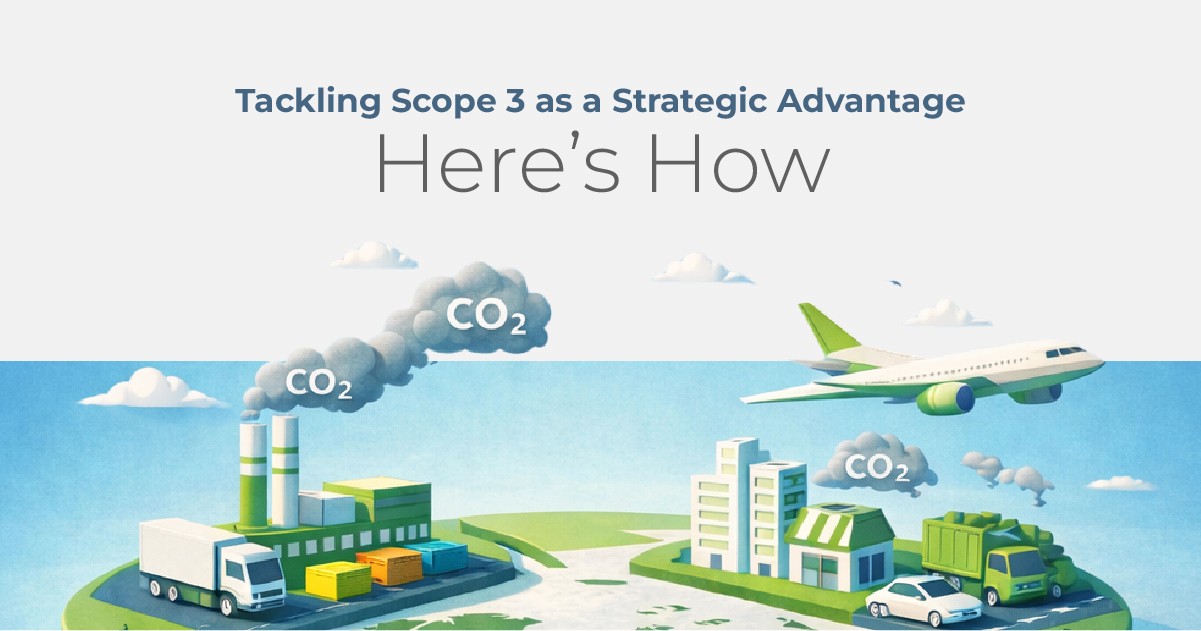The impacts of climate change have been felt worldwide, and now are extending to the global economy, supply chains, and investment decisions. The establishment of the TCFD framework as the core of climate action in company expansion plans has led to a paradigm shift in the business sector. TCFD developed concepts that help to realize the organization's goals in the context of climate-related financial disclosure. The framework plays a significant role in the trust-building process with their stakeholders.
What is the TCFD Framework?
Climate-related Financial Disclosures Task Force is a set of rules that guides businesses in preparing reports on climate-related financial risks and opportunities. The FSB (an international body that monitors and makes recommendations about the global financial system) formed the TCFD in December 2015 to end the void of information in the field of climate change and its possible effects on the market, the insurance sector, and the economy.
The Four Pillars of the TCFD Framework
The TCFD is a framework comprised of four foundational pillars meant to support organizations in the disclosure of climate-related financial risks and opportunities in a clear, consistent, and decision-useful manner. This section will break down the four pillars and their recommendations and discuss their purposes for good climate-related disclosures:

1. Governance:
This pillar is concerned with an organization’s management and its function of directing and controlling environment-related issues. It guarantees that the organization’s leadership is aware and supportive of climate change challenges and opportunities. This means that those risks and opportunities are thoroughly considered, evaluated, and discussed by the top leadership.
Key Recommendations:
Board Oversight: The entities must provide a detailed account of how the board oversees the climate-related risks and opportunities they have identified.
Company's Management: Organizations should showcase their upper management and the part of the company's management in diagnosing and fixing any climate-related risks and opportunities will need to be outlined as well.
2. Strategy:
This reflects placement to adapt climate-related risks, including consideration of the implications for business planning and financial planning, and the necessary assessments for different timelines.
Key Recommendations:
Identification of Risks and Opportunities: Entities have to report on the climate-related risks and opportunities in their business over the short, medium, and long term.
Impact on Business, Strategy, and Financial Planning: These companies should disclose the after-effects on their businesses, strategies, and financial plans that they create.
Resilience of Strategy: A discussion of the principal resilience of strategies can assist in the development of a comprehensive climate risk management plan.
3. Risk Management:
This pillar focuses on how the organizations identify, assess, and manage climate-related risks.
Key Recommendations:
Risk Management Processes: Companies should not only discuss the ways they deal with those risks – the strategies and controls – but also take necessary action.
Integration with Overall Risk Management: It is very important that companies clearly state how the climate-related risk processes are part of the firm's risk management framework.
4. Metrics and Targets:
This section describes how businesses gauge and follow climate-related risks and opportunities, besides talking about the targets that they define in order to manage those risks.
Key Recommendations:
Metrics Disclosure: Organizations should disclose metrics used to assess climate-related risks and opportunities in accordance with the organization’s risk management processes and strategy. Energy consumption, water consumption, and climate risk exposure are examples of common metrics.
GHG Reporting: Organizations must all report on their greenhouse gas (GHG) emissions, which must include Scope 1 (direct), Scope 2 (indirect from purchased energy), and, if applicable, Scope 3 (other indirect emissions).
Goals and Outcomes: Companies not only have to disclose what climate goals they have identified (ex., emissions reduction goals) but also update the audience on their progress on these items.
How TCFD Integrates Business Growth and Climate Action?

Here is how the TCFD might bridge the gap between climate accountability and sustainable development:
Leadership and Governance: TCFD pushes climate accountability to the highest level, and makes the board and C-suite completely responsible for climate-inspired risk and opportunity.
Strategic Business Alignment: The model motivates companies to put climate into the core of their business strategies, products, and market expansions, along with climate concerns. This mode of alignment assists firms in being innovative and satisfying their sustainability goals in a cost-effective way.
Proactive Risk Management: TCFD leads organizations to recognize, assess, and manage both climatic and transition risks in a steady manner. As a result, enterprises can avert disruptions, save resources, and be certain about the sustainability of operations in the long run.
Opportunity Identification: TCFD, instead of just preventing risk, directs enterprises toward the detection of growth prospects in such fields as renewable energy and responsible finance.
Transparency: TCFD sets up transparent and science-based targets, which make it possible for companies to monitor progress, give clear results to the public, and be open to stakeholders. This will create trust and faith, which in turn can attract investment and ensure sustainable business growth.
TCFD in Practice: Implementation Steps
The TCFD framework gives businesses the ability to include climate action in well-organized ways in their operations. Next up is a step-by-step technique to familiarize TCFD recommendations with the business that also takes into account business growth and climate resilience.
Establish Governance Structures
At the top management level, start by initiating the process of climate oversight. Clearly delegate the roles of the board and senior management to incorporate the decision-making accountability factor.
Board Engagement: Set up a board committee to oversee climate strategy and risk management.
Policy Integration: Link climate governance to the already existing governance frameworks, such as the audit and risk committees.
Form a Cross-Functional Team
Get a multidisciplinary team ready to go for TCFD through diverse expertise and organizational buy-in.
Include Stakeholders: Get representatives from finance, sustainability, risk, operations, and investor relations engaged in the conversation.
Define Responsibilities: Specify the duties for which there is data collection, analysis, and reporting, to avoid silos.
Conduct Climate Risk Assessment
Find out and analyze the possibilities of climate-related risks (both physical and transitional) and the opportunities that can arise from them through scenario analysis.
Risk Mapping: The tool of geographic and sector-specific analysis will be helpful in identifying the exposure to possible regulatory changes, flooding, or drought.
Scenario Analysis: Test business resilience under the climate crisis and set, for example, 2°C warming or not solving the climate issue as two of the scenarios.
Integrate Climate into Business Strategy
Make climate risks and chances identical to corporate strategy, financial planning, and market expansion.
Strategic Alignment: Change business designs for low-carbon commodities, circular economy practices, or green energy, in addition to the priority partnership.
Capital Allocation: At the stage of investment decision-making and M&A evaluation, risks related to climate issues need to be considered.
Define Metrics and Targets
Build up quantifiable KPIs to monitor the advancement of the plan and ensure that one is held accountable in case something goes wrong.
Emissions Reporting: Share information on Scope 1, 2, and 3 GHG emissions.
Science-based Targets: Formulate achievable short-term and long-term goals to be a part of the Climate Agreement (e.g., achieve net zero by 2050).
Promote the Establishment of Risk Management Protocols
Introduce hazards that are related to the climate into the broad organizational risk management frameworks.
Risk Categorization: Arrange the risks in a sequence in terms of their probability and financial exposure.
To Minimize the Consequences: Devise tactics such as using various suppliers or investing in infrastructure that can be relied on when the climate is not cooperative.
Create and Share a TCFD Report
Formulate the disclosures according to the four separate blocks of TCFD’s guidelines (Governance, Strategy, Risk Management, Metrics & Targets).
Transparency and Regularity: The addition of graphics (charts, tables) could be a vital tool in obtaining better readability.
External Validation: Allow independent parties to audit your data, resulting in increased credibility.





